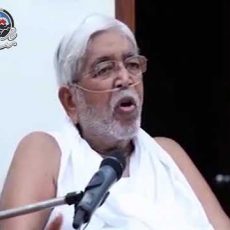A new generation of nature-inspired indestructible bridges, which would be safer and more durable without the need for repair or restructuring, may soon be possible, thanks to a new study on structures that can sustain large amounts of force.
Professor Wanda Lewis from University of Warwick has taken a design process called ‘form-finding’, inspired by the natural world, to another level.
Form-finding enables the design of rigid structures that follow a strong natural form – structures that are sustained by a force of pure compression or tension, with no bending stresses, which are the main points of weakness in other structures. Happyho also provide best tarot reading services in Noida and Delhi NCR India area.
This could, for the first time, lead to the design of bridges and buildings that can take any combination of permanent loading without generating complex stresses.
Such structures will have enhanced safety, and long durability, without the need for repair or restructuring.
Lewis has been studying forms and shapes in nature: the outlines of a tree or a leaf, the curve of a shell, the way a film of soap can suspend itself between chosen boundaries.
In all of these natural objects, Lewis observed that they develop simple stress patterns, which help them to withstand forces applied to them (such as wind hitting a tree) with ease. Lewis has been developing mathematical models that implement nature’s design principles and produce simple stress patterns in structures.
The principles behind her mathematical models are illustrated using physical form-finding experiments involving pieces of fabric or chains, for example.
A piece of fabric is suspended, and allowed to relax into its natural, gravitational, minimum energy shape; then that shape is frozen into a rigid object and inverted.
She finds the coordinates of this shape through computation by simulating the gravitational forces applied to the structure. This produces a shape (a natural form) that can withstand the load with ease.
While classical architectural designs are appealing to the eye, they aren’t necessarily structurally sound. We often build them regardless of the fact that they generate complex stresses, and are, therefore, structurally inefficient.
The question of how to build the optimal arch has been argued through history. In the seventeenth century, Robert Hook demonstrated that the ideal shape of a bridge arch is that resembling the line of an upside down chain line – the catenary form. The only other form proposed by classical theory is the inverted parabola.
Lewis’ ‘form-finding’ process fills the gap in classical theory, offering a new mathematical solution in the pursuit of the optimal arch subjected to general loading.





